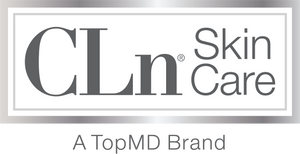October is Eczema Awareness Month. It is also the month weather transitions from warm to cool for Northern states. Changes in temperatures often require changes to eczema management routines. So check out these quick tips to stay comfortable even when the temperature dips…
1. Keep Showers & Baths Short and Tepid
Long or hot bathing sessions dry out skin, and should be avoided. This is especially true in the winter months when dry, cold air can further deplete skin of moisture.
2. Don’t Skip Showers
According to dermatologist Fred Ghali, MD, of Pediatric Dermatology of North Texas, “Frequency of bathing is a worthwhile discussion point with atopic patients. Many eczema sufferers tend to bathe less frequently in cooler months, believing that bathing dries out skin. We share with our patients that daily routine cleansing and moisturizing maintains a healthy skin barrier. Since bacteria such as Staphylococcal aureus can often trigger or intensify the severity of the eczema, we recommend regular bathing throughout the year as a maintenance step in keeping these bacteria in check.”
3. Switch Your Cleanser
CLn BodyWash is an excellent cleanser for eczema-prone skin. But did you know that CLn Gentle Shampoo contains moisturizing glycerin and can actually be used as a body wash during winter’s drying months?
4. Upgrade from a Lotion to a Cream
Drier air and stiffer winds mean skin needs more moisture. Thicker formulas are more occlusive and can help better protect skin.
5. Load Purses and Pockets with Moisturizer
Moisturizing just morning and night—even with cream—might not be often enough if drier air triggers eczema flares. Additionally, if your child suffers from eczema, don’t forget to send moisturizer to school with them. Just make sure to apply lotion to clean skin.
6. Avoid Wool or Scratchy Materials
Although cozy and warm, wool can irritate the skin of eczema sufferers. So, opt for high quality cotton when possible, as it is less likely to irritate sensitive skin.
7. Keep Cotton Mittens Handy
Even if October seems too early to break out the mittens, keep a pair at the ready. Eczema on the hands can cause greater sensitivity to cold temperatures. Additionally, mittens protect hands from drying winds.
8. Wash Mittens and Hats Weekly
Frequently worn items like hats and mittens can rapidly accumulate bacteria that can enter breaks in the skin of eczema sufferers. Hence, washing gear thoroughly—and allowing it to completely dry—is a simple way to reduce exposure to harmful microbes.
9. Invest in a Humidifier
Dry, indoor air leaches skin moisture and can exacerbate eczema. Therefore, consider getting a humidifier for bedrooms if you notice more symptoms in cooler months. Be sure to clean the filter frequently.
10. Watch Out for Reactions to Fabric Softener
Static is a fact of life in colder, drier months. Due to this, many people use fabric softener to reduce static, not realizing it coats clothing in ingredients that can trigger eczema flairs. Since these ingredients, like fragrances and additives, can do more harm than good, fabric softener is best avoided unless you are certain it does not trigger flairs.
We hope you’ve learned more about managing eczema from these tips. And don’t forget to subscribe to our blog to have new content delivered right to your inbox.
The post Eczema Tips for Temperature Dips appeared first on CLn® Skin Care Blog.
Disclaimer: Unless otherwise explicitly stated, the content on this blog, including all articles, videos, and other information, is for
general informational purposes only and is not intended to be a substitute for professional medical advice,
diagnosis, or treatment. Always seek the advice of your physician or another qualified health provider with any
questions you may have regarding a medical condition or treatment and before undertaking a new health care regimen.
Never disregard professional medical advice or delay in seeking it because of something you have read on this website.
The views expressed on this blog and website have no relation to those of any academic, hospital, health practice,
or other institution.
